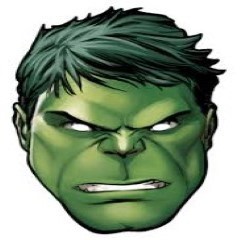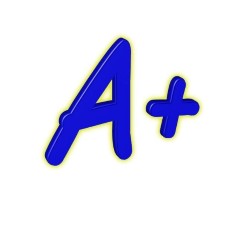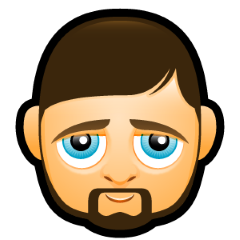MGT521 MGT521 Week 3 QUIZ
1. Question : (TCO C) Under current accounting practice, intangible assets are classified as
amortizable or unamortizable.
limited-life or indefinite-life.
specifically identifiable or goodwill-type.
legally restricted or goodwill-type.
2. Question : (TCO C) Which of the following intangible assets should not be amortized?
Copyrights
Customer lists
Perpetual franchises
All of these intangible assets should be amortized.
3. Question : (TCO C) The intangible asset goodwill may be
capitalized only when purchased.
capitalized either when purchased or created internally.
capitalized only when created internally.
written off directly to retained earnings.
4. Question : (TCO C) ELO Corporation purchased a patent for $90,000 on September 1, 2008. It had a useful life of ten years. On January 1, 2010, ELO spent $22,000 to successfully defend the patent in a lawsuit. ELO feels that as of that date, the remaining useful life is five
years. What amount should be reported for patent amortization expense for 2010?
$20,600.
$20,000.
$18,800.
$15,600.
5. Question : (TCO C) During 2011, Bond Company purchased the net assets of May Corporation for $1,000,000. On the date of the transaction, May had $300,000 of liabilities. The fair value of May's assets when acquired were as follows: How should the $500,000 difference between the fair value of the net assets acquired ($1,500,000) and the cost ($1,000,000) be accounted
for by Bond?
The $500,000 difference should be credited to retained earnings.
The $500,000 difference should be recognized as a gain.
The current assets should be recorded at $540,000 and the noncurrent assets should be recorded at $760,000.
A deferred credit of $500,000 should be set up and then amortized to income over a period not to exceed forty years.
6. Question : (TCO D) Which of the following is a condition for accruing a liability for the cost of compensation for future absences?
The obligation relates to the rights that vest or accumulate.
Payment of the compensation is probable.
The obligation is attributable to employee services already performed.
All of these are conditions for the accrual.
7. Question : (TCO D) Under what conditions is an employer required to accrue a liability for sick pay?
Sick pay benefits can be reasonably estimated.
Sick pay benefits vest.
Sick pay benefits equal 100% of the pay.
Sick pay benefits accumulate.
8. Question : (TCO D) Information available prior to the issuance of the financial statements indicates that it is probable that, at the date of the financial statements, a liability has been incurred for obligations related to product warranties. The amount of the loss involved can be reasonably estimated. Based on the above facts, an estimated loss contingency should be
accrued.
disclosed but not accrued.
neither accrued nor disclosed.
classified as an appropriation of retained earnings.
9. Question : (TCO D) Stine Co. is a retail store operating in a state with a 6% retail sales tax. The retailer may keep 2% of the sales tax collected. Stine Co. records the sales tax in the Sales account. The amount recorded in the Sales account during May was $148,400.
The amount of sales taxes (to the nearest dollar) for May is
$8,726.
$8,400.
$8,904.
$9,438.
10. Question : (TCO D) Vargas Company has 35 employees who work eight-hour days and are paid hourly. On January 1, 2009, the company began a program of granting its employees ten days of paid vacation each year. Vacation days earned in 2009 may first be taken on January 1, 2010. Information relative to these employees is as follows:
Vargas has chosen to accrue the liability for compensated absences at the current rates of pay in effect when the compensated time is earned. What is the amount of the accrued liability for compensated absences that should be reported at December 31, 2011?
$94,920.
$90,720.
$79,800.
$95,760.
11. Question : (TCO D) Reich, Inc. issued bonds with a maturity amount of $200,000 and a maturity ten years from date of issue. If the bonds were issued at a premium, this indicates that
the effective yield or market rate of interest exceeded the stated (nominal) rate.
the nominal rate of interest exceeded the market rate.
the market and nominal rates coincided.
no necessary relationship exists between the two rates.
12. Question : (TCO D) The printing costs and legal fees associated with the issuance of bonds should
be expensed when incurred.
be reported as a deduction from the face amount of bonds payable.
be accumulated in a deferred charge account and amortized over the life of the bonds.
not be reported as an expense until the period the bonds mature or are retired.
13. Question : (TCO D) Feller Company issues $20,000,000 of ten-year, 9% bonds on March 1, 2010 at 97 plus accrued interest. The bonds are dated January 1, 2010, and pay interest on June 30 and December 31. What is the total cash received on the issue date?
$19,400,000
$20,450,000
$19,700,000
$19,100,000
14. Question : (TCO D) A company issues $20,000,000, 7.8%, 20-year bonds to yield 8% on January 1, 2010. Interest is paid on June 30 and December 31. The proceeds from the bonds are $19,604,145. What is interest expense for 2011, using straight-line amortization?
$1,540,207
$1,560,000
$1,569,192
$1,579,793
15. Question : (TCO D) On January 1, Martinez Inc. issued $3,000,000, 11% bonds for $3,195,000. The market rate of interest for these bonds is 10%. Interest is payable annually on December 31. Martinez uses the effective-interest method of amortizing bond premium. At the end of the first year, Martinez should report unamortized bond premium of:
$185,130
$184,500
$173,550
$165,000
MGT521 MGT/521 Week 3 Quiz
1 . The process of dividing work activities into separate job tasks is known as ________.
A. work specialization
B. differentiation
C. chain of command
D. span of control
2 . The process of grouping jobs together is known as ________.
A. departmentalization
B. centralization
C. formalization
D. decentralization
3 . The line of authority that extends from upper organizational levels to lower levels, clarifying who reports to whom, is known as the ________.
A. employee power distance
B. unity of command
C. span of control
D. chain of command
4 . Which of the following is a characteristic of a mechanistic organization?
A. Cross-functional teams
B. Free flow of information
C. Wide spans of control
D. Clear chain of command
5 . Which of the following structures is highly adaptive, loose, and flexible?
A. Organic
B. Centralized
C. Vertical
D. Mechanistic
6 . Companies would become more ________ if they allowed professionals to set the priorities and allocate the resources for their departments.
A. bureaucratic
B. mechanistic
C. diversified
D. organic
7 . In a ________ structure, no clear chain of co...






Mastermind
Senior JournalistSell Your Solution Report Solution Support Center
Online Users
-
 Mastermind
Today
Mastermind
Today





A+ - A+ Thank You!
Thank you! I appreciate the positive feedback.